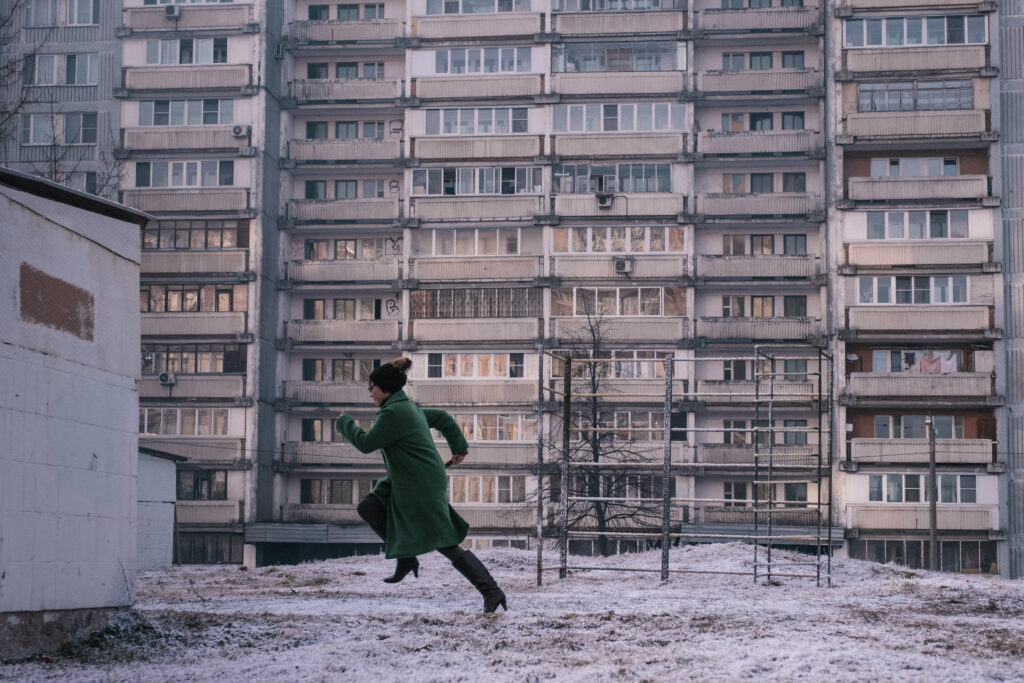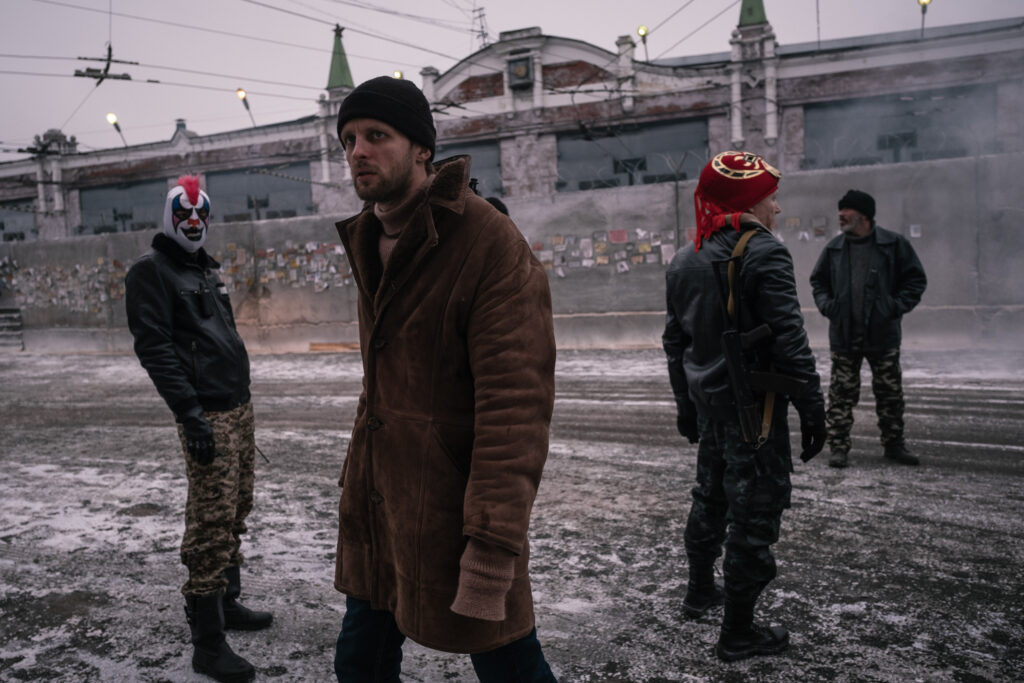Petrov’s Flu flows between reality and fantasy, weaving the tale of the Petrov family as they go about their ordinary lives in an extraordinary post- Soviet world. Poverty and violence are rife – as is the flu, which begins to spread throughout the film.
Our protagonist, Petrov is a comic book writer who spends an inordinate amount of time away from his family (and his work) travelling around town and getting into trouble. His equally irresponsible friends play no small part in this habit, tempting him from the path home at every opportunity by dragging him into one horrifyingly ridiculous scheme after another. Meanwhile his wife, Petrova, is a local librarian and as unremarkable as they come. Well, except for her wacky demon powers and superhuman strength, which she repeatedly uses to murder unsuspecting strangers. Even her son, the most recognisably ‘normal’ member of the family, seems likely to end up her victim; his sickly pallor and chesty croak offering a none too subtle hint of death to come.

Based on Alexey Salnikov’s novel ‘The Petrov’s In and Around the Flu’, Russian director Kirill Serebrennikov welcomes us into a world filled to the brim with violence and disease. Ordinary activities like taking public transport or shopping for alcohol are riddled with danger, the former momentarily held up by a public execution, the latter turning into an actual hold up (fake gun and all). Indeed, there hardly seems to be a single scene in the first half of the film that does not have either explicit violence or glimpses into the brutality happening beyond our gaze. Ranging from streets lit with orange flares to police cars on every road, violent arrests with little cause, to assisted suicide and public executions, the danger our characters face is constantly alluded to – both overtly and covertly – as it builds to a near unbearable tension.
Much like how one imagines a bad acid trip might have looked this past couple of years, our characters’ twisted reality has never seemed more plausible than in our pandemic-marked world. Theirs, of course, is far more extreme, yet the xenophobia, lack of trustworthy authority and general anticipation of death hanging over the whole film certainly provide an uncomfortable dose of reality – despite the aliens and demons making regular appearances.

While not ‘mainstream’, and thus not a film everyone will enjoy, Serebrennikov’s latest offering is a piece of outstanding genius; Petrov’s Flu is unlike any film you’re likely to have ever seen or will ever see again. It boggles the mind even as you witness it unfold, let alone later as you try to describe it aloud. It is at once hilarious and heart-warming, and brutally violent, delightfully blending genres that shouldn’t mix. More than anything, Serebrennikov’s true brilliance shines in his pairing of a relatively boring (and bizarre) plot with a punk soundtrack and spectacular visuals. The result is something perplexing, entirely engaging and deeply human that both alights the senses and keeps the mind racing long after the credits roll.
Of course, great direction is not enough to make a great film; skilled actors are equally important. Mercifully, here too Petrov’s Flu delivers, with Semyon Serzin (Petrov) and Chulpan Khamatova (Petrova) creating a wonderfully believable and painfully imperfect (ex)marriage. They lead the film with ease, each perfectly embodying their character until person and performance seem inseparable. Vladislav Semiletkov (Petrov’s son) provides a similarly impressive performance, handling the heavy matter of the film with aplomb, while Yuri Kolokolnikov (Igor) successfully carried a great deal of the film’s comedic weight.
Fair warning – Petrov’s Flu is not for the faint-hearted. Viewers will need patience, curiosity and the ability to handle violence. Yet, if you can approach this film with these and an open mind, you will be richly rewarded.
Petrov’s Flu will be released in U.K cinemas on the 11th February.
